Evolution in the News
Evolution may seem like something that happened a long time ago, and as such it can be difficult for students to see the relevance to their own lives. To make evolution current for students, we have developed this collection of stories about recent breakthroughs in evolutionary biology research and its applications in society.
NESCent and Understanding Evolution collaborate to develop monthly Evolution in the News text stories and podcasts. The stories, along with links to background literature and classroom resources are available on the Understanding Evolution site, and the podcasts are available here. NESCent also has a collection of Evolution in the News stories, both text and podcast, generated prior to our collaboration with Understanding Evolution which can be found here: Archived Evolution in the News.
These podcasts may be downloaded from iTunes U for free, or viewed on YouTube. Also, the small viewing window can be expanded to full screen using the control panel on the bottom of the viewing pane.
Aqui se puede econtrar enlaces a "La Evolución en las Noticias" historias y recursos en Español.
Evolution in the News stories
from Understanding Evolution and NESCent
 Tree Thinking Basics - September, 2012
Tree Thinking Basics - September, 2012
Tree thinking, or phylogenetics, is an important way of understanding evolutionary relationships. Reading trees correctly can pose some challenges. This video introduces the basics of tree reading and addresses common problems in tree reading.
(Image credits: Jon Lang and Mikael Häggström)
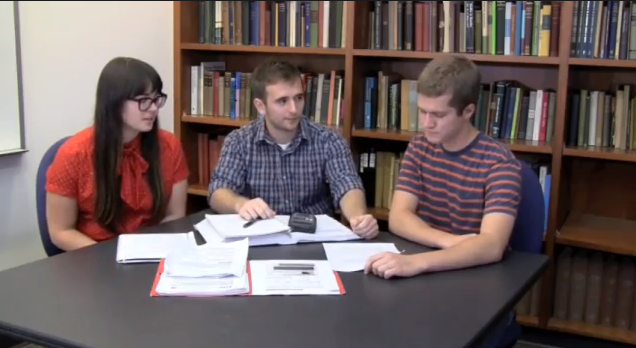 Tree Thinking Challenges - November, 2012
Tree Thinking Challenges - November, 2012
This video quiz gives you the opportunity to test your tree thinking skills. Watch each segment and then select an answer and get feedback on your choice.

Bad at estimating? Blame Evolution! - February, 2011
The next time you are in the kitchen, try this experiment: pick up a box of butter (four sticks) in one hand and a box of saltines (four packets) in the other. Which is heavier? If you said the butter, you are not alone. Most people would identify the box of butter as the heavier object — even though, if you look at the labels, you'll see that they both weigh exactly one pound! This is an example of the size-weight illusion, and it is incredibly common. Recent research by Dr. Geoffrey Bingham and Dr. Qin "Arthur" Zhu suggests that the roots of this modern party trick can be traced back to the evolutionary origins of Homo sapiens and to the opportunities provided by a well thrown rock or spear.
Complete Evolution in the News story and resources
"La Evolución en las Noticias" historias y recursos en Español
(Image credit: Escuela Virtual de Deportes, Colombia)
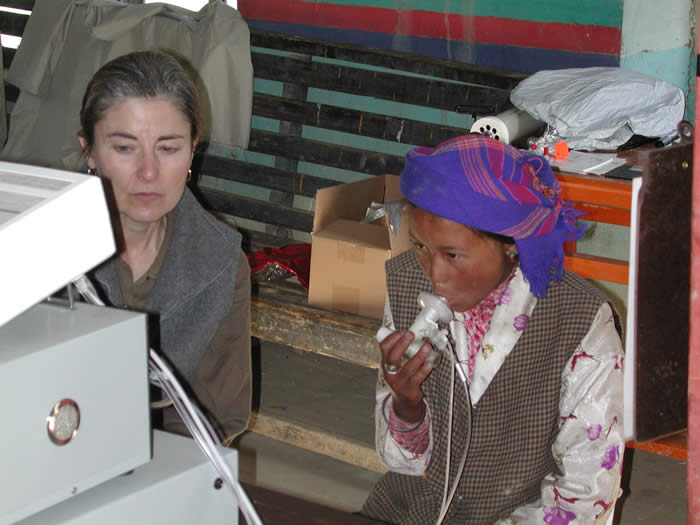 Evolving altitude aptitude - October, 2010
Evolving altitude aptitude - October, 2010
Cynthia Beall investigates the adaptations that allow people to thrive at high altitudes. By examining the underlying molecular changes that result in these adaptations, researchers have discovered an example of incredibly fast human evolution. Dr. Beall presented at the National Association of Biology Teachers 2009 Evolution Symposium on Extreme Environments. Her talk and associated resources may be found here.
Complete Evolution in the News story and resources
(Image Credit: C. Beall)
 Bed bugs bite back thanks to evolution- September, 2010
Bed bugs bite back thanks to evolution- September, 2010 Bed bugs might sound like an old-fashioned problem, but now they are back - and with a vengeance. Fifty years ago, the blood-sucking pests were nearly eradicated in the United States thanks in part to the use of pesticides like DDT. Today, they are creeping over sheets - and tormenting hapless sleepers - across the country. Dr. James Crow, Professor Emeritus of Genetics at the University of Wisconsin - Madison, is one of the founders of population genetics and molecular evolution. He shared his experiences both with early research in pesticide resistance and with bed bugs! (11.5 minutes)
Podcast Only
Complete Evolution in the News story and resources
"La Evolución en las Noticias" historias y recursos en Español
 Making sense of hominin DNA - May, 2010
Making sense of hominin DNA - May, 2010
Scientists are learning more about the rich history of hominins by combining traditional fossil and morphological evidence, behavioural information (such as where hominins lived, and what tools or artwork they made), and now genetic evidence. We can now sequence DNA from bone fragments that date back to a time when humans co-existed with Neandertals in Europe. A recent discovery in Russia added a new twist to the story by preceeding any morphological data with genetic data extracted from one pinky finger bone. Dr. John Hawks, an anthropologist at the University of Wisconsin-Madison, talked about what this result might mean and how it fits into the larger picture of hominin evolution. (15.5 minutes)
Complete Evolution in the News story and resources

The evolutionary history of jogging - March 2010
>Humans are incredible long distance runners but running shoes are a relatively new addition to the running scene. Humans evolved to run barefoot and recent work has demonstrated that we run very differently in shoes or bare feet. By studying how we move under different conditions, evolutionary anthropologists can learn how and why injuries occur and potentially how to avoid them. Dr. Daniel Schmitt, an evolutionary anthropologist at Duke University talked about his work in this area. (13 minutes)
Podcast only
Complete Evolution in the News story and resources
(Image: Bibi Saint-Pol, MatthiasKabel)
 Speciation in real time - February, 2010
Speciation in real time - February, 2010
Usually speciation occurs over long periods of time, but this month we look at two examples of evolution occuring in a few decades. Carlos Botero, a post-doctoral fellow at the National Evolutionary Synthesis Center, talks about his work on speciation in mockingbirds which occurs over longer time frames. Dr. Botero explains how scientists study historical evolutionary events by comparing traits in modern species with phylogenetic models. (12 minutes)
Complete Evolution in the News story and resources
"La Evolución en las Noticias" historias y recursos en Español
(Image: Carlos Botero)

Oxygen as an evolutionary constraint - November, 2009
(2009 Year of Science themes- Celebrate Chemistry!)
Earth's chemistry is both influenced by and exerts influence on life on the planet. A group of researchers at NESCent have explored how body size has changed over the history of life on Earth and found an interesting correlation between increases in body size and changes in atmospheric oxygen. They talked with us about their research, what the group discovered and where their research will take them next. (16.5 minutes)
Complete Evolution in the News story and resources
(Image: Payne et al, 2009, PNAS)
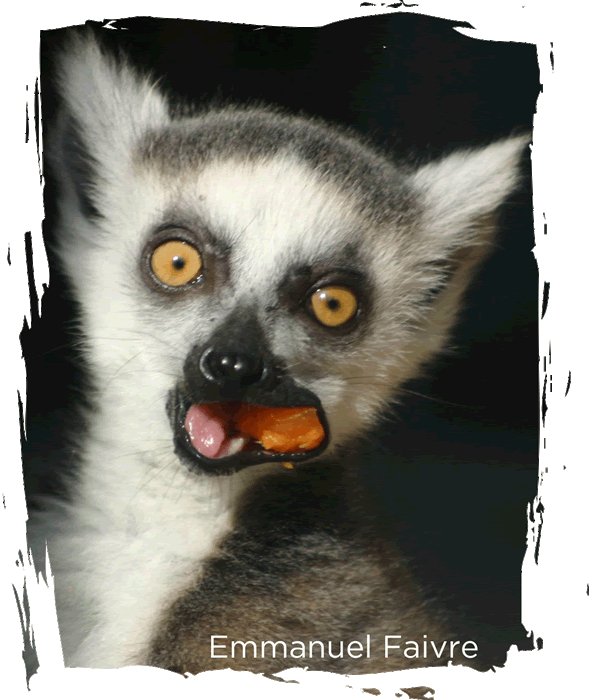 Where did all of Madagascar's species come from? - October 2009
Where did all of Madagascar's species come from? - October 2009
(2009 Year of Science themes - Celebrate Geosciences and Planet Earth)
Madagascar is home to an incredible collection of unique and fascinating species. To understand this biodiversity, scientists use an interdisciplinary approach combining geology and biology to unravel the puzzle. Dr. Anne Yoder, Professor of Biology and Evolutionary Anthropology at Duke University, is the Director of the Duke Lemur Center. She talked with us about the evolutionary history of Madagascar's species. (13 minutes)
Podcast only Complete Evolution in the News story and resources
"La Evolución en las Noticias" historias y recursos en Español
(Image: Emmanuele Faivre)

A species unwelcome inheritance: extinction risk - September 2009
(2009 Year of Science - Celebrate Biodiversity and Conservation)
With the species of the world facing the sixth mass extinction, conservation efforts are underway to protect and preserve as many species as possible. But on which species should conservation efforts focus? Dr. David Jablonski, Professor at the University of Chicago, explains how his research indicates that extinction risk is not distributed evenly across species, but instead clumped in evolutionarily related groups, which has profound implications for conservation efforts. (14 minutes)
Complete Evolution in the News story and resources
"La Evolución en las Noticias" historias y recursos en Español
(Image: David Jabolonski)
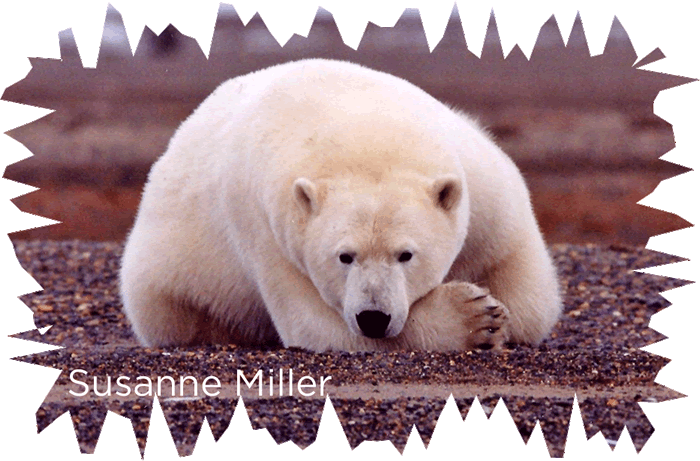 Coping with climate change - May 2009
Coping with climate change - May 2009
(2009 Year of Science - Celebrate Sustainability and the Environment )
Climate change is impacting species across the planet, and the pace of climate change is a major issue. One question people are asking iw wheterh or not species can adapt to the changes quickly enough to survive. Dr. George Gilchrist, Professor of Biology at the College of William and Mary, talks about how species adapt or acclimate to changing conditions. (13.5 minutes)
Complete Evolution in the News story and resources
(Image: Susanne Miller)
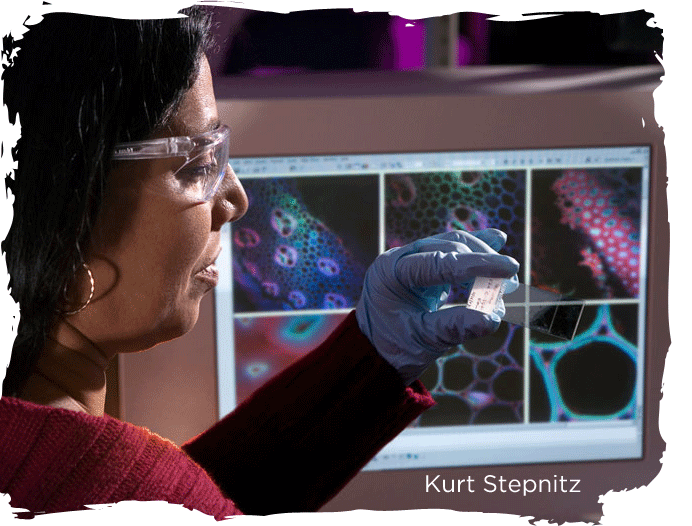
Better biofuels through evolution - April 2009
(2009 Year of Science - Celebrate Energy Resources)
Evolutionary biology has many applications in society and this month we learn how scientists use evolution in the search for more sustainable biofuels. Dr. Syd Withers of the Great Lakes Bioenergy Research Center talks about how directed evolution is used in his work. (13 minutes)
Complete Evolution in the News story and resources
"La Evolución en las Noticias" historias y recursos en Español
(Image: Kurt Stepnitz, Great Lakes Bioenergy Resource Center)
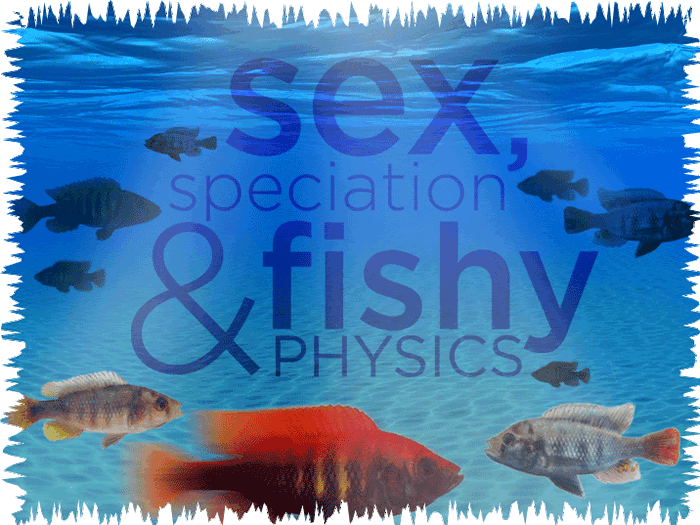
Sex, speciation and fishy physics - March 2009
(2009 Year of Science - Celebrate Physics and Technology)
Biology draws on other scientific fields to understand the physical, chemical and environmental forces that constrain and drive evolution. This month, we look at a story about how optical physics influences speciation in fish. Sönke Johnsen, Associate Professor of Biology at Duke, talks about the effects of light and color on fish speciation. (12 minutes)
Complete Evolution in the News story and resources
"La Evolución en las Noticias" historias y recursos en Español
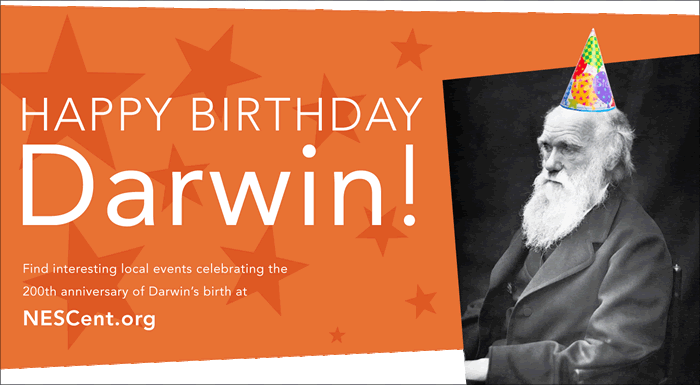 Happy 200th, Darwin! - February 2009
Happy 200th, Darwin! - February 2009
(2009 Year of Science - Celebrate Evolution)
Darwin's remarkable theory of evolution was a product not only of Darwin's scientific reasoning, but also of his culture. Dr. Elliott Sober, a philosopher of science at the University of Wisconsin, talks about how culture shaped Darwin's ideas. (14 minutes)
Complete Evolution in the News story and resources
"La Evolución en las Noticias" historias y recursos en Español
 Tough conservation choices? Ask evolution! December 2008
Tough conservation choices? Ask evolution! December 2008
Conservation of an entire ecosystem is not always possible, but how can we decide which members of the ecosystem are most important in maintaining a healthy ecosystem? Nick Haddad, Associate Professor of Biology at North Carolina State University, talks about a paper that provides an effective guideline for conservation of plants based on their evolutionary relationships. (14 minutes)
Complete Evolution in the News story and resources
"La Evolución en las Noticias" historias y recursos en Español
(Image: MPF)
HIV's not-so-ancient history - November 2008
Understanding when and how pathogens such as HIV become human pathogens can help us control the diseases they cause and prevent future pathogen transfers. Dr. Katia Koelle, Assistant Professor of Biology at Duke University, talks about what we can learn from reconstructing viral histories, including some unexpected applications. (14 minutes)
Complete Evolution in the News story and resources
(Image: Dorpsool)
 Evolution's dating and mating game - May 2008
Evolution's dating and mating game - May 2008
As in most animals, octopus love life is full of interesting behavoirs. Dr. Roy Caldwell, Professor of Integrative Biology at the University of California, Berkeley, talks about research he and colleagues did that sheds light on two particularly interesting behaviors: mate guarding and sneaking. Both are evolutionary adaptations to increase the number of a male's offspring. (10.5 minutes)
Complete Evolution in the News story and resources
"La Evolución en las Noticias" historias y recursos en Español
(Image: Roy Caldwell)
 Superbug, super-fast evolution - April 2008
Superbug, super-fast evolution - April 2008
Methicillin resistant Staphylococcus aureus, or MRSA, is an increasingly common medical problem. MRSA is a strain of Staphylococcus aureus has evolved multiple drug resistance. Infections caused by normal S. aureus are fairly easy to treat with antibiotics, but an infection casused by MRSA is very difficult to treat and can be life threatening. Dr. Christina Burch, Associate Professor of Biology at the Univeristy of North Carolina at Chapel Hill, talks about the evolution of drug resistance in commensal bacteria like S. aureus. (10 minutes)
Complete Evolution in the News story and resources
(Image: Shorelander)
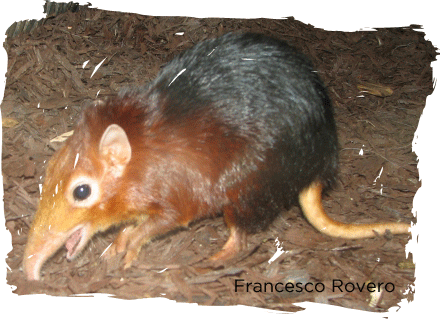 The new shrew that's not... - March 2008
The new shrew that's not... - March 2008
The discovery of a new mammal is always exciting, but the grey faced sengi, or giant elephant shre, is particularly interesting because of it's evolutionary history. Dr. Kathleen Smith, Professor of Biology at Duke University, and Dr. Samantha Price, Post-doctoral Fellow at the Unversity of California, Davis, talk about how biogeography helps us place the sengi with the afrotheria - a group that includes elephants, dugongs, tenrecs and aardvarks! (14 minutes)
Complete Evolution in the News story and resources
(Image: Francesco Rovero)
This collection of podcasts includes some earlier podcasts without text stories, longer interviews with scientists, and student generated podcasts.
Podcasts for NESCent Evolution in the News stories
- Ant Highway Repair (Download from iTunes U)
- Monkey Business (Download from iTunes U)
- Speedy Evolution in Galapagos Finches (Download from iTunes U)
Podcast Interviews with Scientists
Elizabeth Derryberry was a graduate student in Steve Nowicki's lab at the time this interview was conducted. She talked about her publication on bird song and speciation. She has since graduated and Dr. Derryberry is currently a post-doctoral fellow at Louisiana State University. (Download from iTunes U)
Scientists and visitors at NESCent took a few minutes to have "Tea with Darwin," an opportunity for modern scientists to share their thoughts with Darwin or ask him questions.
Student Generated
University of North Carolina - Chapel Hill
Fall 2007 Bio213: Evolution and Life
- Why Men Matter: Mating Patterns Drive Evolution of Human Lifespan
- Orb Spiders are a Unique Product of Evolutionary History
- Primates on the Brink of Extinction Warning: This podcast contains graphic images.

